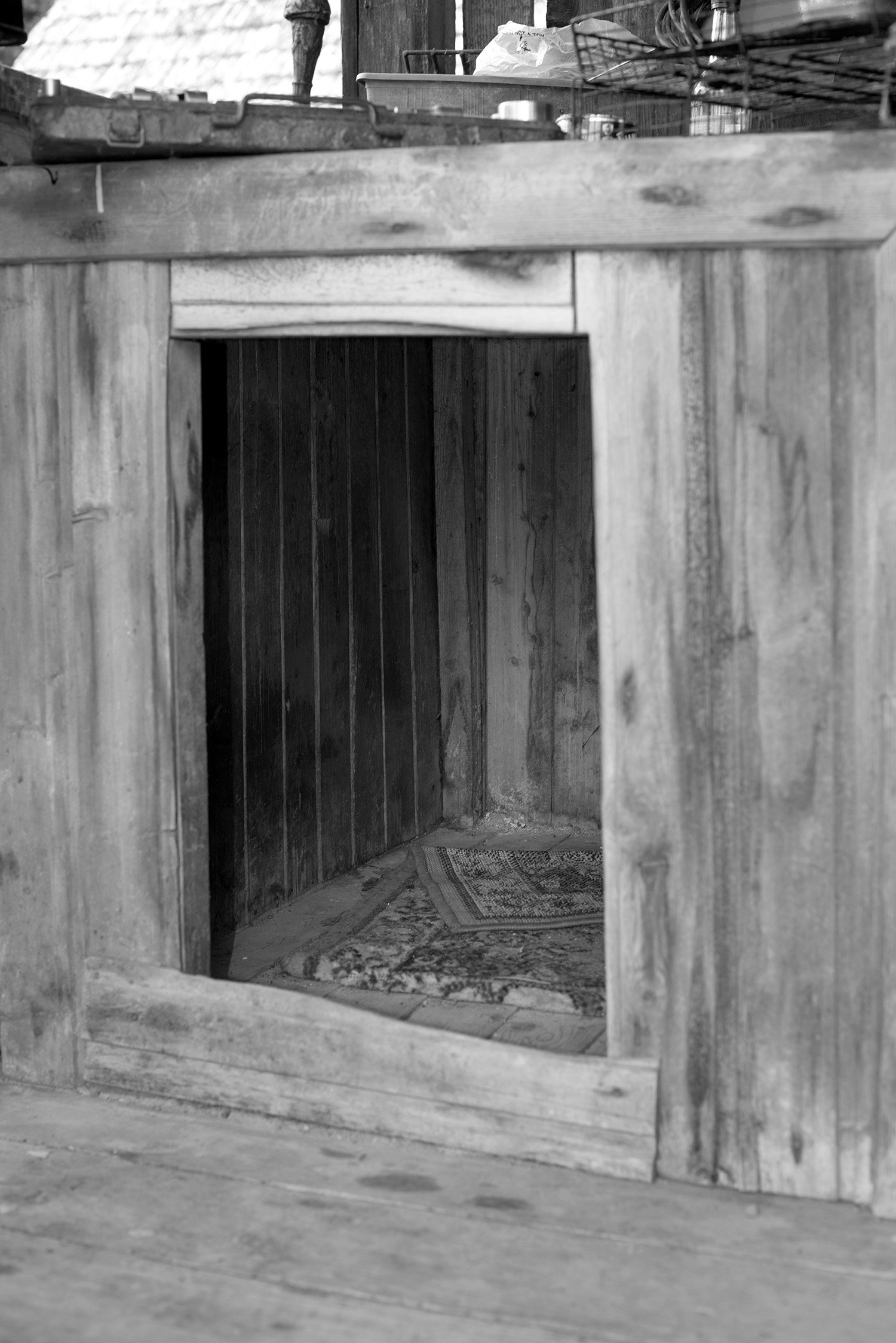III. The Three-Headed Whale
In project — III. The Three-Headed Whale — Ekaterina Yanova presents us with a photographic story based on autobiographical events. The narrative is divided into three parts. The story starts with Ekaterina speaking about her grandmother’s house caught on fire on a Christmas night; the next part is when Ekaterina was 13 years old, and a man followed her inside an apartment building, threatening her with a knife; lastly, the transition is to the memory about her father, who was murdered.
A complex traumatic experience is based on several occurrences from the teenage years, leaving an indelible memory that has had a tremendous impact to emerge in this project. Ekaterina explains, “This project is a kind of therapy — metaphorical cards, which I can shift as if those are my childhood traumas, accepting them and looking for a reflection of myself in them.“ Trying to heal the trauma is accentuated by the need to bring awareness to stopping any possible recurrence. The memory of the closed doors in the apartment building brought an idea to ask people to participate in the project and share images of their apartment’s doors to emphasize that an offense can happen anywhere and raise questions about society and the way to deal with trauma.
‘This project is a kind of therapy — metaphorical cards, which I can shift as if those are my childhood traumas, accepting them and looking for a reflection of myself in them.’
In my project — III. The Three-Headed Whale — I rethink three autobiographical events from my growing-up years while creating a disturbing narrative and my own mythology through an appeal to the image of a Celestial Whale. In mythology, Whale is depicted as a terrible monster with three mouths and three heads, tentacles, claws, and a poisonous scorpion tail. The whale symbolizes tremendous power and energy. Once unleashed, it can destroy everything on its way. The lowest level of manifestation of the power of the Whale is in the creation of chaos — the fall into the abyss. And, at the highest level, the Whale destroys all that has lived to create conditions for future development.
This project is a kind of therapy — metaphorical cards, which I can shift as if those are my childhood traumas, accepting them and looking for a reflection of myself in them. I work mostly in black and white with occasional bright yellow flashes. I build and destroy an imaginary reality. My memories from childhood have merged with tangible details and the emotional perception of events.
I was born in a typical provincial town with ordinary buildings. I went to school and jumped between garages' roofs afterward. Among my peers, many children were from dysfunctional families. A lot of events seemed then to be within the norm — the range of the dysfunctional norm. As a child, I spent New Year's holidays with my grandmother in a small village in an old wooden house. With severe frosts, we used to turn on the fireplace in the attic. One Christmas night, the house went ablaze.
‘When I was 13 years old, when returning home after school, a man followed me to the entrance and threatened me with a knife, demanding to go up the stairs with him.’
I
“On a snow-white night, when a black cat was knocking down plates in a village kitchen, to the creak of old wood boards in a dusty attic, through a duvet children blanket and soft sleep, our house was burned down.”
When I was 13 years old, when returning home after school, a man followed me to the entrance and threatened me with a knife, demanding to go up the stairs with him. We ascended several floors, and when we stopped, I managed to escape. I ran home as fast as I could, running down the stairs, passing floor after floor and apartment after apartment. I didn’t even think of ringing someone’s bell — my legs carried me autonomously.
When working on this project, I decided not to go back to that very house. I wanted to get away from the documentary and universally display the event. I used a participatory approach, asking those who wanted to take part in the project to take pictures of their front doors.
The random choice of the object adds something global to the project since this horrible situation, unfortunately, can happen in any building and any city. It happened that most of the doors were in dark colors and the images, unexpectedly for me, acquired the outlines of tombstones.
‘I decided not to go to the court so I wouldn't remember the culprits’ faces. Most of my father’s facial features eventually began to blur in my memory.’
II
“What if there's salvation behind each door, but you cannot get hold of it?
A man in his forties. Dark hair. Big mink fur hat. Black jacket.
A butterfly knife. 7 flights of stairs. 7 floors. One door.”
When I was getting close to the end of my teenage years, on a summer night, in a city park close to a lake, my father was killed. I decided not to go to the court so I wouldn't remember the culprits’ faces. Most of my father’s facial features eventually began to blur in my memory. Approaching the age when he died, I don’t remember his facial features well, but I understand his internal characteristics better.
III
‘In the city park close to a lake, my father was killed. I know the place. I know the time. I know the names of the culprits. But I don't remember the faces.’











